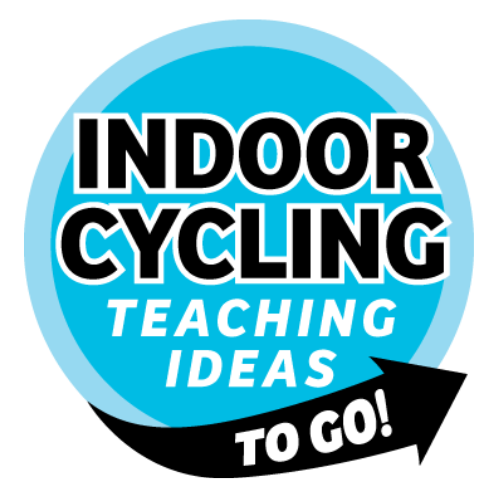If you are old school like me, there were no power metres when we first started teaching. We had to learn to cue power through inviting riders to push their tension while increasing their speed.
Power has been the never ending battle for cycling instructors. It seems like every class we teach, someone is floating their tension on a speed drill, which I am more convinced the bike is riding the cyclists versus the cyclist is riding the bike.
The reason instructors get so frustrated is because of what I call "ghost riding." If I were to crank the pedals with my hand and let the bike go, it would ride all by itself for a few minutes and this is because the flywheel is heavy causing the pedals to move on it's own.
It may also be why instructors like me shake their heads at spin studios where riders are easily hitting 130 on their RPM reading. All that is doing is setting someone up for failure and injury and it is not delivering the workout that a rider could be getting if they added "power" to the game.

What is Power?
It's how much work you create and how fast you create it. There are two ways to generate power.
1. Increase your speed while maintaining your tension
2. Increase your tension while maintaining your speed
Think of power as SPEED (RPM) X TENSION (Gears). If you are at a light tension, it's easy to hit 110 + on your RPM dial, but as soon as the tension starts being added, it begins to become a challenge to hold that RPM, therefore creating Power.
"The watt is a measurement of power determined by calculating the rate at which the work is being completed, and equals joules per second." Dr. Kevin Steele.
The beauty about power is it measures the actual work that is being generated; unlike a heart rate monitor which can be influenced by stress, caffeine, sleep etc.
Power metres in my own studio have been a game changer for myself and my members. It really allows us to own our workouts through the beautiful piece of accountability. It is that accountability in which change and improvements to fitness will come.
What is the Purpose of Using Power in Indoor Cycling?
Much like many sports, using power increases your performance, allows for general fitness increases, and can increase weight loss results because you are improving your fitness, endurance, and ability to climb a hill. Basically, everything is being challenged which burns more calories and creates a stronger and fitter body.
Is there a Sweet Spot for Power?
I personally believe so. We all vary in our muscle size and strength and weight. Someone who is larger or stronger may be able to add heavier tension compared to the person next to them who is going at the same cadence which generates more "power".
This is why it is so important as instructors to coach participants to find that "sweet spot" which allows for increased power and it is sustainable in a class. You want to challenge them to push but not get caught up on one variable over the other because power truly is the bridging of speed and tension.
Teaching spinning and coaching drills (especially with a monitor) is not "one size fits all." Our job as coaches is to give guidelines and targets, for example, asking your members to spin between 90-110 RPM allows for everyone to reach for a goal. If they cannot make it to 90 RPM, give it to them as a goal to reach for, especially new riders.
Remember, we want to encourage more people to enjoy spinning and help them feel confident on the bikes. The more we guide them through a great workout which generates power, the more results they will see.
Education is crucial. It's our job to educate on tension and speed. Allowing classes to go at their own "free will" is not teaching. Work some drills around increasing speed or resistance to feel what power feels like.
Happy Teaching!
Rachel Seay :)
Power Drill Examples:
Drill A)
5 sets of 30 seconds with a 15 second recovery. Ask them to start at a lighter resistance and aim for 90-110 RPM. After each set, add a gear or more resistance than the last set, while attempting to maintain their 90-110 RPM.
Drill B)
5 sets of 30 seconds with a 15 second recovery. Ask your riders to start with a moderate to heavy tension but a lower speed 60-80 RPM. After each set, add 5 more RPM to their interval while maintaining their tension.
Drill C)
Work a heavy song drill into creating a high amount of average power throughout the ride. This will be a constant of pushing their RPM and finding that tension that creates the perfect power "sweet spot." One of my favourite songs for a power drill with more speed focus is "Best Fake Smile" by James Bay. It has a good steady beat throughout the song. If you are looking for a gritty song with more tension, "Not Afraid" by *Eminem or "We Own It" by 2 Chainz (Fast & Furious). *note explicit lyrics*


